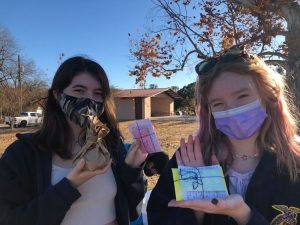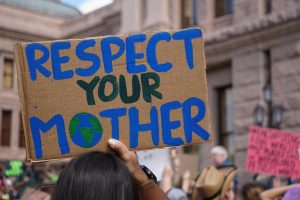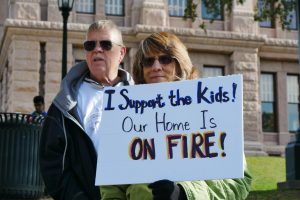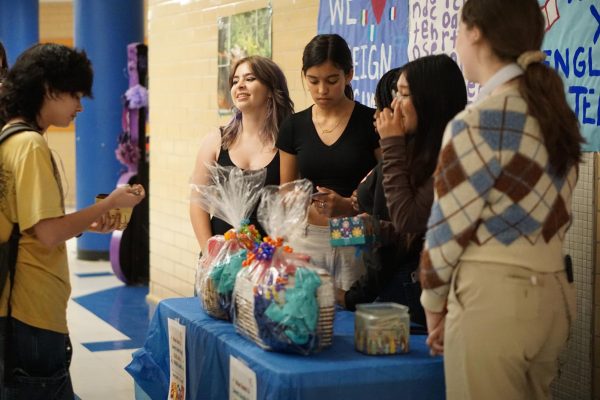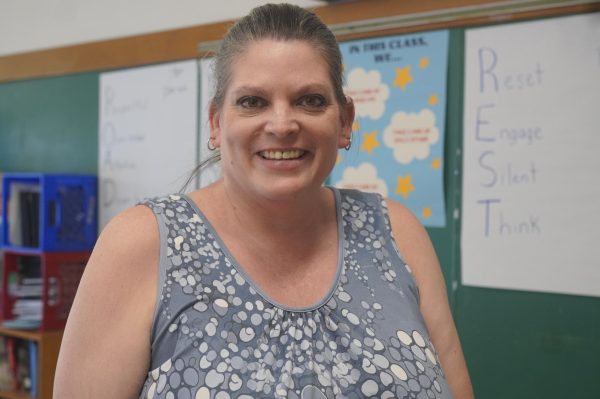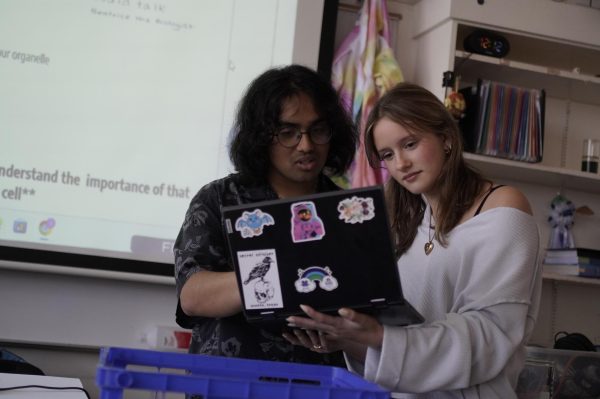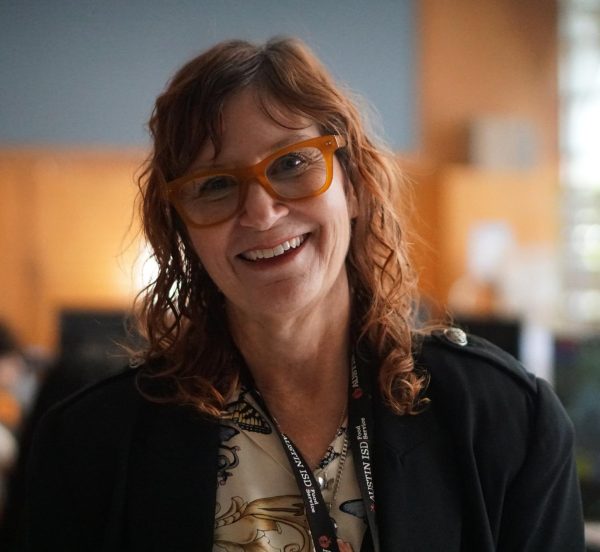She speaks for the trees
Senior fosters a love for everyday nature in elementary classrooms
Senior Veronica Britton feels the bark of a Texas Live Oak tree with her fourth-grade class during a tree identification tour. “I learned about trees at school and that was cool,” fourth-grader Russ Farris said. Photo by Lucy Marco.
Senior Veronica Britton loves nature. She gardens, hikes, does yoga in the park, works on climate action, runs a plant Instagram account and is a hiking-sandal enthusiast. She also happens to love interacting with children. This October, she got to share her passion for trees with elementary students through interactive and experimental lessons at Bryker Woods Elementary.
Through Youth Forest Council and her connections as a Bryker Woods alum, she found an opportunity to try out teaching twice a week for two weeks, teaching first- and fourth-graders.
“I got certified as a ‘Project Learning Tree’ teacher through Youth Forest Council, which is how I got the ‘OK’ to teach the kids,” Britton said.
She carefully selected lessons from a large book of activities that she received as part of her certification. Her first lesson for her small group of first-graders emphasized the importance of trees and helped them separate nature sounds from man-made sounds.
“I basically did a listening activity where we had a discussion about trees and why trees are important, how trees play a role in their lives,” she said. “I would ask, ‘So, what kinds of sounds do trees make? Do certain animals have adaptations to help them hear better?’ They drew the sound maps to make them more aware of which sounds come from nature and which sounds come from society. So you hear trees and birds, but you also hear roads and AC units.”
For her fourth-grade class, a larger group of about 20 students, her first lesson was a poetry activity.
“[The lesson] was actually super fun,” Britton said. “We researched trees, but instead of just collecting data, we wrote poems with the information that we learned.” The second lesson for both her first-graders and fourth-graders was a tree identification tour, where Britton would lead the students around the campus from tree to tree and they would identify the tree by recognizing its features.
“We would walk around the campus, and I’d say, ‘This is how you identify a live oak, with this leaf shape, and this leaf texture and this bark,” Britton said. A key feature of her tree identification tours was the sensory call and response, which kept the students engaged and participating. “What shape are these leaves?” Britton asked the students. The fourth-graders would respond with a loud “Oval!” “How do they feel?” she asked. All the fourth-graders would scramble to pick up a leaf and report back on how it felt. “These are the leaves of a Texas Live Oak,” Britton said.
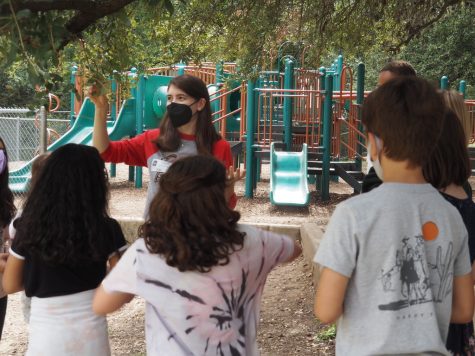
She was surprised by the students’ enthusiasm.
“I thought it would be harder to get them to talk than it was. I thought they were going to be shy, but a lot of them were really eager to speak up, which was sweet but also hard.”
She felt that climate change and talking about the importance of nature was an unusual topic for the students to be learning in school.
“I feel like this was a topic that they haven’t talked about before based on the amount that they had to say,” she said. “It seemed like it was refreshing for them to talk specifically about trees, instead of erosion, or the stuff inside the science textbooks. But erosion is important, too.”
Russ Farris, a fourth-grade student in Veronica’s forestry class, found it exciting and new to learn about trees.
“I learned about trees at school and that was cool,” Farris said.
Britton said the same about the statements her students made in class. She remembered one of her favorite quotes from her time teaching.
“I asked ‘So, use your five senses, what do you notice about the trees?’ And one of them goes, ‘It smells so wet.'”
Britton believes that incorporating climate and environmental education into elementary schools would make a huge impact on the future of climate legislation and a more environmentally friendly future.
“Literally just talking about trees, plants or nature more in an elementary school curriculum would make such a big difference, just because the next generation will value the environment,” Britton said. “Fostering an appreciation for the environment would be so huge for getting people to do things, like vote and care about the climate. I feel like that would be a really big deal, just to have a lot of people brought up talking about the importance nature holds in our everyday lives. I just feel like if we had more environmental education, then we would see an increase in climate action.”
Although she can’t see herself being a classroom teacher, she believes she will be a climate educator.
“I definitely want to incorporate that into my career if possible, just being around kids,” Britton said. “I definitely can’t see myself as an elementary school teacher, but I’d love to be an educator in another sense.”
Britton’s advice for anyone interested in going into environmental education or getting experiences with teaching is to put yourself out there and be persistent.
“Push yourself out there,” she said. “Be OK with triple emailing someone. Just because they don’t respond doesn’t mean they don’t want to do it. And if you want to teach elementary schoolers, they probably want to work with you. You just have to put in the work to be in contact with them.”
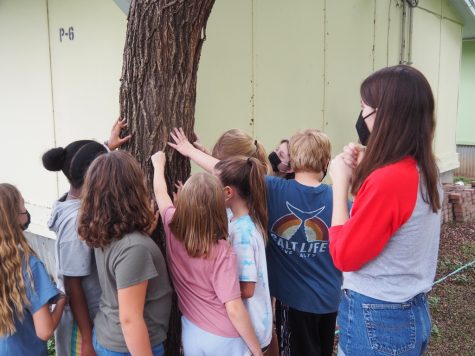
Your donation will support the student journalists of McCallum High School. Your contribution will allow us to purchase equipment and cover our annual website hosting costs.



